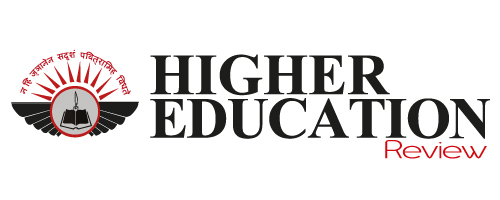Strategies for Attracting Top Talent in a Competitive Job Market
 Yogita Shanbhag is Head of Human Resources at Juniper Networks, India. She is a certified leadership and development coach from ICF. With over 20 years of expertise in Human Resources in technology organizations, she believes in building great places to work, leading through transformation, creating impactful employee experiences and building progressive work culture at organizations. Is passionate about areas of fostering business acumen, digital native orientation, people enablement and empowerment, and ESG.
Yogita Shanbhag is Head of Human Resources at Juniper Networks, India. She is a certified leadership and development coach from ICF. With over 20 years of expertise in Human Resources in technology organizations, she believes in building great places to work, leading through transformation, creating impactful employee experiences and building progressive work culture at organizations. Is passionate about areas of fostering business acumen, digital native orientation, people enablement and empowerment, and ESG.
The single greatest asset for any organization is people. It is pivotal to identify them thoughtfully, engage them productively, develop them responsibly, understand their evolving patterns, keep them informed about expectations and challenges, and tap into their unique expertise to drive success.
Industries are witnessing one of the most transformative times due to aspects of major global governance changes, pressing ecological derivatives and rapidly evolving digital revolution. It is interesting to observe that learning and innovation are happening simultaneously at all levels to achieve growth and set new milestones on transformation.
Talent at the heart of all organizations is the most important investment that steers the future of organizations. The leaders of today define the success of organizations tomorrow. The talent marketplace today includes multiple generations, diversity of thoughts and beliefs, the evolution of super intelligent AI systems, and global mindsets that amalgamate to bring solutions to customers and value to shareholders.
The influence on this talent canvas, which is broader today than ever before, is led by pull factors and push factors. The pull factors include 'philosophy and purpose of organizations', 'branding of organizations', 'growth potential of organizations' while the push factors include 'growth in qualified talent supply', 'rise of middle class in economy', 'access to education' and 'growth in global organization mindset' frameworks.
Talent paradigms are witnessing a seismic transformation. Talent of today is 'future focused', 'hungry for learning' and already in a 'future state of thinking'. Talent strategies and role of strategic human resources is key to providing stability in the dramatically evolving talent landscape and building robust organizational cultures. Strategic pillars on talent and talent management will define great employee experience, alignment with purpose and achievement of ambitious business goals.
Talent Strategies in a Competitive Market:
Intelligent Organizations
Good talent will look forward to associating with organizations that are viewed as progressive and agile. This would mean these organizations have the latest intelligent technology and tools to learn and thrive on. Intelligent tools can reduce tactical aspects of a job and help focus on the core of business solutioning with a strategic focus enabling efficiency and growth. Intelligent, secure, simple, self-service and self-healing systems for ease of doing a job can reduce employee burnout and increase productivity.
DEIGB
Various studies have proven that organizations with a focus on diversity, equity, inclusion and belonginess achieve higher state of innovation, better employee satisfaction and growth in financial performance. Within DEICB, organizations will need to break away from a metric tracking approach on aspects influencing diversity to strategic focus on specific aspects such as 'inclusion' as that is a big leap from metric driven diversity mindset. Fostering a collaborative and inclusive work environment improves employee belongingness and aids retention. The upper echelons of leadership will need to be role models and anchors. Bringing talent from various channels creatively and incubating technology talent through partnerships through academic alliances is an evolving talent stream.
Culture of Empathy
Talent appreciates a culture of fostering trust and stronger long-term commitment. The emotional intelligence and value from individuals will need to be harnessed to focus on building genuine empathy. Respect for individuals at the core will mean that policies and employee voice is represented and actioned on for effectiveness and impact. Culture officers and ambassadors along with defining tone at the top based on educated understanding of talent needs will be in focus. Culture as a priority always benefits in steering an organization through dynamic changes. Organizations that 'listen' to their talent, mentor talent and take time to provide clarity and transparency on 'goals' and 'evolving targets' will thrive.
Employee Wellbeing
Wellbeing will need to be a strategic focus and priority. Conservative programs will have to give way for new age customized and curated programs to be relevant and resonate with the talent group at a point in time. Creative and genuine investment in stable programs and working with experts to build psychological safety will provide an environment for being the most effective version of oneself. Flexible work arrangements will be a powerful conversation starter.
Future Skills Development
Talent development viewed in the light of lateral and vertical career movements in the past are now tilting towards opportunities for ongoing learning. A talent incubation investment will be about certifications and readiness to solve complex problems that digital space brings from time to time. Offering clear paths to advancement and ongoing education is necessary. The lens through which talent development and individual career paths are viewed needs a refreshed and revived approach.
Branding and Purpose
Philosophy of the organization, problems that an organization is solving and impact that the organization is creating are aspects that need to be relayed and understood simplistically. The reach through platforms that are accessible to employees, customers, potential partners and employees in a way that builds the brand persona beyond advertising is important. Leveraging social media to advantage is important. It will be important to make it easy for employees and candidates to know why the organization is the best choice.
Outside In View
Organizations will have to invest in data inferencing, understanding market best practices and competitive compensation positioning benchmarking for building great teams and retaining competitive talent. Patterns on outside in viewpoints will present the real facts in a fast-paced market where trends need to be understood and communicated with regularly. Consortiums and dialogue channels with peers and industry will evolve to bring solutions on sustainability and communities.
It is very aptly stated that organizations are a subset of the society. The closer the organization is to the ecosystem, the readiness to acquire, retain and grow the right talent and meet their aspirations will be hugely possible and lead to successful outcomes.

.jpg)